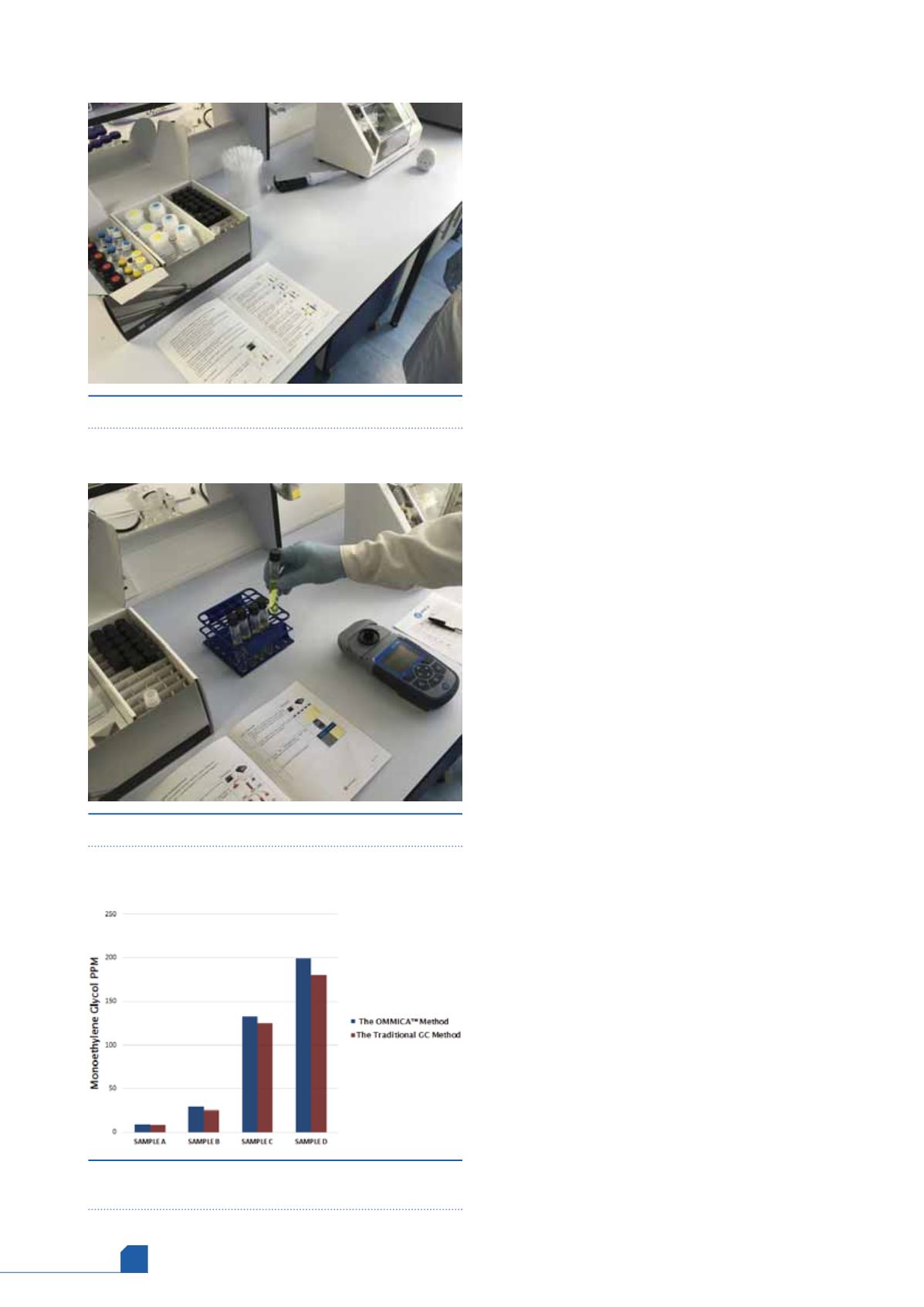
March
2017
HYDROCARBON
ENGINEERING
90
focused on making these results easier and faster to
obtain.
Case study: thermodynamic hydrate
inhibitors
The story starts upstream, where MEG and
methanol are used as thermodynamic hydrate
inhibitors. However, once they have fulfilled their
function, these two chemicals become undesirable
in produced fluids.
Methanol is most commonly used at the point
of startup and when production conditions enter
the hydrate envelope, so regeneration is seldom
used. Methanol partitions readily to the water
phase, and is largely discharged to sea with
produced water. Small percentages also partition to
the oil phase where it can have negative impacts on
downstream operations. This means production
during these periods often has to be deferred or
quarantined, so an operator needs to be able to
isolate the affected product. Analysis of methanol
content in oil over time is used to detect the
passing of the methanol slug, and thus it offers
great benefit to the operator to be able to obtain
results quickly, to track the slug in near real time.
Any time delay may be costly as unexpected
methanol levels can have adverse fiscal
consequences.
Downstream, whilst the refinery will attempt to
wash the crude of methanol, significant quantities
of methanol can damage or destroy the sensitive
microorganisms used to treat the effluent water,
damaging the efficacy of this system, and
potentially leading to costly repair operations. To
mitigate some of this risk, refineries will often pass
this cost back to the producer by imposing high
waiver fees on contaminated crude. In this scenario,
both the crude producer and refinery stand to
benefit from accurate knowledge of the methanol
concentration in the crude. Delays in receiving test
results can mean the possibility of the crude
already having arrived at the refinery, waiver fees
being imposed and the damage being done.
In much the same way as methanol, MEG is a
known contaminant and a potential source of issues
during processing at refineries. Although MEG also
more readily partitions into the water phase than
the oil phase, the MEG in a crude shipment also has
a damaging effect on the sieve beds at the refinery.
Typically, large amounts of MEG are continually
injected to prevent hydrate formation in flowlines.
Given the high cost of MEG, replacement is often
not feasible, so regeneration and re-injection is
often chosen as the most cost effective option.
During the regeneration process, MEG is
separated from the crude through a process of
heating and recovery from residual water. This
process leaves the system open to MEG losses
through two main channels; the MEG that remains
Figure 1.
Setting up for using OMMICA.
Figure 2.
OMMICA testing underway.
Figure 3.
Correlation of the samples using OMMICA
method and GC in an independent laboratory (ppm).








